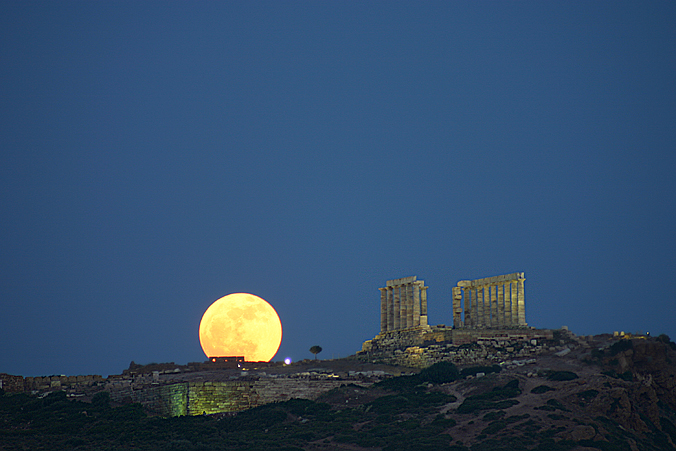Me he mudado, a partir de ahora puedes encontrar nuevas historias en:
Como es lógico, de ahora en adelante La Tierra de Uel no se actualizará, perdona las molestias
Por supuesto, todas las nuevas entradas podréis seguirlas a través del RSS de Control-Zeta.es
Como es lógico, de ahora en adelante La Tierra de Uel no se actualizará, perdona las molestias
Por supuesto, todas las nuevas entradas podréis seguirlas a través del RSS de Control-Zeta.es
23 junio 2005
Ayer al final no vi la luna (Malditas luces, malditos edificios, maldito trabajo... Maldita ciudad) Dicen que fue la más grande en 18 años y que tardará mucho en volver a producirse un caso igual (lo que no me queda claro es lo que algunos dicen de que es porque está más cerca)
Pero me llega esta impresionante imagen a través de "Astronomy Picture of the day" (como ya he contado en alguna ocasión), que aunque no es de ayer (ayer tuvo que ser todavía mejor), merece la pena. Allí si habría estado bien verla

Y está es la explicación que dan
Pero me llega esta impresionante imagen a través de "Astronomy Picture of the day" (como ya he contado en alguna ocasión), que aunque no es de ayer (ayer tuvo que ser todavía mejor), merece la pena. Allí si habría estado bien verla

Y está es la explicación que dan
The Moon was full this month on June 22nd, only a day after the northern hemisphere's summer solstice. Since this solstice marked the northernmost point of the Sun's annual motion through planet Earth's sky, the full Moon rising near the ecliptic plane opposite the Sun was at its farthest south for the year. Only a month earlier, on May 23rd, astronomer Anthony Ayiomamitis recorded this picture of another southerly full Moon rising above Cape Sounion, Greece. The twenty-four hundred year old Temple of Poseidon lies in the foreground, also visible to sailors on the Aegean Sea. In this well-planned, single exposure, a long telephoto lens makes the Moon loom large, but even without optical aid casual skygazers often find the full Moon looking astonishingly large when seen near the horizon. That powerful visual effect is known as the Moon Illusion.Otra explicación en castellano
Tags: Personal


Una cosa queno se menciona en el artículo (creo) es que la órbita de la luna alrededor de la tierra es un pelín excéntrica. No creo que tenga mucho que ver con la eclíptica, no? A menos que la distancia al Sol afecte la relación Luna-Tierra (que alguien me ilumine en esto, please :))